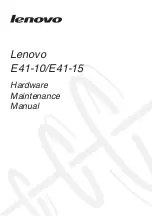
Table 30. Security (continued)
Option
Description
●
Disabled
●
Reboot Bypass
Enable Non-Admin
Password Changes
When enabled, the user can change system and hard drive password without admin password.
●
On
●
Off
Enable UEFI Capsule
Firmware Updates
Allows the user to configure BIOS updates via UEFI capsule update packages
●
On
●
Off
Absolute
Allows the user to enable, disable or permanently disable the BIOS module interface of the
optional Absolute Persistence Module service. The controls are as follows:
●
Enabled
●
Disabled
●
Permanently Disabled
TPM 2.0 Security On
Allows the user to enable or disable TPM security. The controls are as follows:
●
On
●
Off
PPI Bypass for Enable
Commands
Allows the user to enable or disable TPM Physical Presence Interface (PPI). The controls are as
follows:
●
On
●
Off
PPI Bypass for Disabled
Commands
Allows the user to enable or disable TPM Physical Presence Interface (PPI). The controls are as
follows:
●
On
●
Off
PPI Bypass for Clear
Commands
Allows the user to enable or disable TPM Physical Presence Interface (PPI). The controls are as
follows:
●
On
●
Off
Attestation Enable
Allows the user to enable or disable TPM endorsement Hierarchy for the operating system. The
controls are as follows:
●
On
●
Off
Key Storage Enable
Allows the user to enable or disable TPM endorsement Hierarchy for the operating system. The
controls are as follows:
●
On
●
Off
SHA-256
Allows the user to enable SHA-256 hash algorithm to extend the measurements into the TPM
PCRs during BIOS boot. The controls are as follows:
●
On
●
Off
30
System setup











































